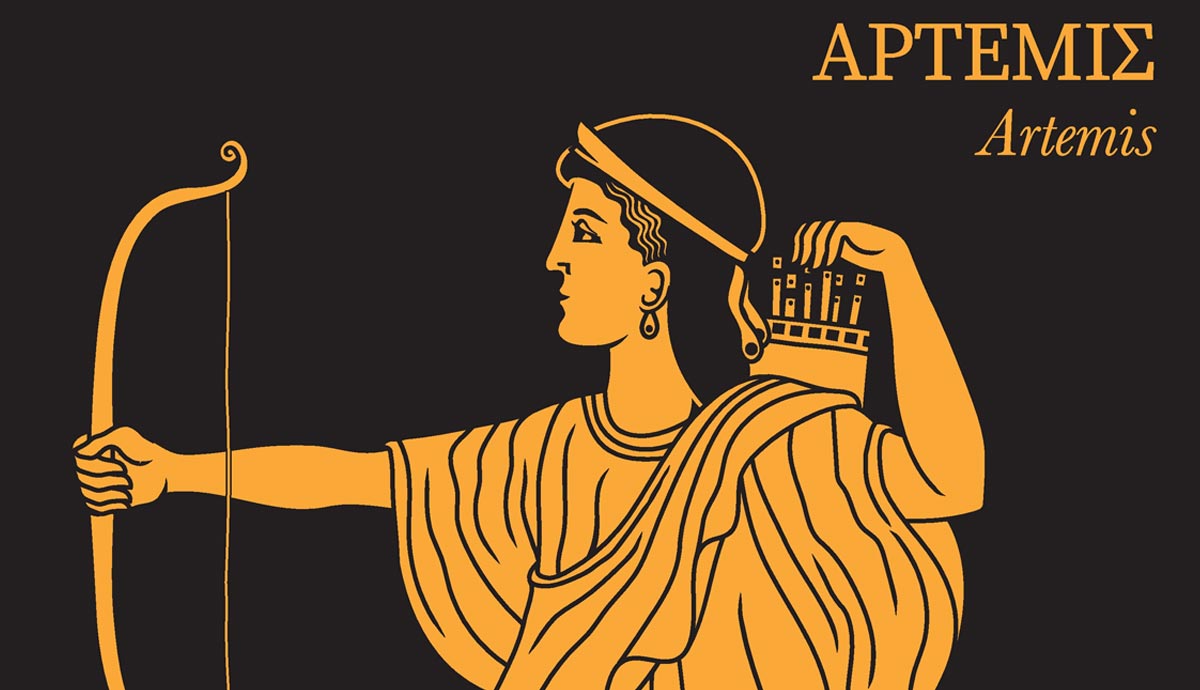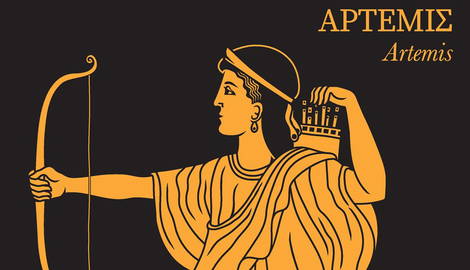
Artemis is one of the twelve Olympian gods in Greek myth, the daughter of Leto and Zeus. Unlike her twin brother, Apollo, who represented civilization and order, Artemis represented the untamed wilderness. Depicted as a young maiden, the goddess was very protective of her chastity and was one of only three virgin goddesses in the Greek pantheon.
Many of the stories told about Artemis were cautionary tales about what happened to those who tried to violate her virginity or refuse to pay her the proper respect. Below are ten of the most important stories about Artemis from Greek myth.
1. The Birth of Artemis

The Greek goddess Artemis, known as Diana among the Romans, was the daughter of Zeus and Leto and the elder of the divine twins. Most stories relate that Artemis was born before Apollo. Some even claim that after she was born, Artemis acted as a midwife for the birth of her brother.
According to the accounts in Apollodorus’ Library of Greek Mythology and Hyginus’ Fabulae 53, Artemis was born on the island of Ortygia. In some versions of the story, this island was formed when the goddess Asteria turned into a quail and cast herself into the sea to escape Zeus’ advances. In other versions, she was turned into a quail and cast into the sea by Zeus because she rejected his advances. Either way, it was on this island that Leto gave birth. It was later renamed as Delos.
However, in the Homeric Hymn to Delian Apollo the poet mentioned Ortygia and Delos in a way that implied they were separate islands. The Roman geographer Strabo also believed that the two islands were distinct from each other and that Ortygia was most likely Rheneia, a small island nearby where the Delians buried their dead.
2. The Nymph Callisto

Artemis was always accompanied by a retinue of beautiful young nymphs. One of these nymphs was named Callisto. Unfortunately, the nymph’s beauty gained her the attention of Zeus, who raped and impregnated her. Like Artemis herself, all her nymph companions were meant to remain virgins.
When Artemis found out that Callisto was pregnant, she became furious. Accounts differ on the punishment. Some claim that Artemis turned Callisto into a bear, while others claim that a different god turned her into a bear, and that she was then shot and killed by Artemis.
In the most well-known version of the story from Ovid’s Metamorphoses, Artemis only banished Callisto, and it was then Hera who transformed her. Callisto was eventually killed by her own son, Arcas, who was out hunting one day and didn’t realize that the bear was his mother.
3. The Death of Orion

Orion was a hunting companion of Artemis, but she killed him when he offended her. The nature of the offense is disputed, with some sources claiming that he challenged her to a discus contest, while others claim he tried to rape her. Yet others say that he fell in love with Eos, goddess of the dawn, and Artemis killed him out of jealousy.
In yet another account, Artemis was in love with Orion. Apollo worried that this would cause her to break her vow of chastity, so when Orion was out swimming, Apollo bet his sister that she couldn’t hit the black object out at sea. Artemis accepted the challenge and shot an arrow that hit Orion square in the head. When his body washed ashore, she realized what she had done, and turned him into a constellation.
4. Niobe and Her Children

Niobe was the daughter of Tantalus. One day, she boasted of how she was more blessed with children than Leto since she had twelve children, or fourteen depending on the account, while Leto only had two. The goddess was so insulted that she asked her children to avenge her honor. They killed all of Niobe’s children with Apollo killing the males and Artemis killing the females.
Niobe was so heartbroken by the deaths of her children that her tears became a river, and she turned to stone. On Mount Sipylus, modern Spil, there is a stone that, if looked at from the correct distance, looks like a woman weeping.
5. The Transformation Actaeon

Actaeon was a grandson of Cadmus and was trained as a hunter by Chiron. In Hyginus’ Fabulae, the story is told over two entries, 180 and 181. The first entry relates that Actaeon watched Artemis bathe and tried to rape her, inciting the goddess’ anger. The second says that Actaeon came upon Artemis bathing by accident. One day, after a particularly arduous hunt, he stopped at a spring to get a drink for himself and his dogs. Unbeknownst to him, Artemis had done the same and was bathing in the spring. To prevent him from speaking of what he saw, she turned him into a stag. He was chased down by his own hunting dogs and mauled to death.
Other versions do not attest to an attempted rape, but in the Dionysiaca by Nonnus of Panopolis, it is written that Acteaon was a servant of Artemis and purposefully spied on her. He was then caught by the goddess’ attendants and metamorphosed into a stag.
6. Aloads, the Sons of Aloeus

The Aloads, named Otus and Ephialtes, were sons of Poseidon and the mortal woman Iphimedeia. They were referred to by the patronymic Aloads (or Aloadae) because their mother was the wife of a Thessalian prince named Aloeus.
Otus and Ephialtes were unique in that every year, they grew more than a foot wider and six feet taller. By the time they were nine years old, they were five stories tall, and the two boys sought to overthrow the gods. They piled mountains on top of each other to climb to the heavens, and they threatened to throw so many mountains into the sea that the sea would become land and the land would become sea. In Book 11 of the Odyssey, Homer wrote that Apollo killed them, but other sources add more to the story.
In Apollodorus’ Library of Greek Mythology, they also tried to seduce Hera and Artemis. Cleverly, Artemis disguised herself as a deer and jumped between the two giants. They each tried to skewer the goddess with their spears but missed and killed each other instead.
7. Hippolytus and Phaedra

Hippolytus was the son of Theseus by Antiope, sister to the Amazonian queen Hippolyta. Phaedra was the sister of Ariadne, the princess of Crete who helped Theseus to overcome the Labyrinth and the Minotaur. Like he did with Ariadne, Theseus eventually lost interest in his wife, Antiope, and sought to remarry. He became infatuated with Phaedra, and she became his new wife.
Recounted and dramatized in 5th century BCE playwright Euripides’ Hippolytus, the titular character is a young man who loves to hunt and has no interest in marriage. This goes against cultural norms, as teenage boys would transition from worshiping Artemis, the virgin goddess, to worshiping Aphrodite, as a rite of passage from childhood into manhood.
Aphrodite took offense to this, so she cursed Phaedra, now Hippolytus’ stepmother, to lust after him. Hippolytus rejected her, and in her shame, she committed suicide. But Phaedra left a note for Theseus as a final revenge on her stepson. In it, she claimed that he raped her. In grief and anger, Theseus prayed to Poseidon to take revenge on Hippolytus. The god obliged.
While Hippolytus was riding his chariot, Poseidon sent a bull up from the sea that scared Hippolytus’ horses. He was thrown from the chariot and dragged to his death.

There’s an alternative ending to the myth given in Hyginus’ Fabulae. Artemis saved Hippolytus by taking him to Asclepius to be revived from death. She then took him to Italy where he lived out the rest of his days.
8. The Death of Adonis

By the end of Euripides’ play, Artemis vows to avenge Hippolytus’ death by killing one of Aphrodite’s loves. She chose the mortal Adonis. According to Ovid’s Metamorphoses, Adonis was the son of Myrrha and her own father, King Cinyras of Cyprus. Like with Phaedra, Aphrodite cursed Myrrha to lust after her father. The incestuous relationship ended with a pregnant Myrrha being transformed into a tree. From that tree sprouted the beautiful baby Adonis.
Aphrodite instantly fell in love with the youth and would spend all her time with him. They would go hunting in the mountains just like Artemis, except Aphrodite would steer him clear of any dangerous animals and warn him of the dangers of facing any predators. One day, when Aphrodite was away, Artemis exacted her revenge by sending a boar that skewered Adonis with its tusks.
9. The Sacrifice of Iphigenia

When the Greeks were setting out for war against the Trojans for the abduction of Helen, queen of Sparta, they were waylaid at Aulis due to unfavorable winds. The seer Calchas divined that Artemis was unhappy with King Agamemnon because once, while on a hunt, he declared after shooting a deer that not even Artemis could have made such a shot. She was also angry that his ancestor Atreus failed to sacrifice a golden lamb to her as he had promised.
To remedy the goddess’ displeasure, Agamemnon was told that he had to fetch his most beautiful daughter and sacrifice her on the altar like a lamb. The king sent Odysseus to get his daughter, Iphigenia, and bring her back by telling her that she had been promised in marriage to Achilles. The ploy worked, and when Iphigenia arrived she was taken up to the altar where her own father killed her.
Or so he thought. At the last moment, Artemis replaced her with a deer and whisked her away to Tauris where she became the goddess’ priestess.
10. Artemis in Homer’s Iliad

Artemis did not play as major of a role in the events of Homer’s Iliad as the other Olympians. But she did make a few appearances on the side of the Trojans. In Book 5, the hero Aeneas was whisked away from the fighting by Apollo and brought to a sanctuary in Pergamus. Once there, he was healed by Artemis and her mother, Leto.
Later, in Book 20, when Achilles came forth to fight against the Trojans, Zeus gives permission to the gods to go down among the armies and aid whichever side they wish. Of the Olympians, Hera, Poseidon, Athena, Hermes, and Hephaistos sided with the Greeks. Ares, Apollo, Artemis, and Aphrodite sided with the Trojans. The only Olympians that didn’t participate were Zeus, Hades, and Demeter.
Each god faced off against another from the opposing side. Poseidon battled with Apollo, Athena with Ares, Hermes faced Leto, Hephaistos fought the river god Xanthus, and Artemis battled with Hera. When Apollo and Poseidon eventually came to terms with each other, Artemis chastised her brother as a coward.
Hera then chided Artemis, offering to give her a demonstration in warfare of the difference in their power. Hera took both of Artemis’ wrists in one hand and with the other she stripped her of her bow and quiver. With bow and arrows in hand, Hera smacked Artemis upside the head with her own weapons. Weeping, Artemis fled from the battle, leaving her weapons there. The final image of the goddess is her crying on the lap of Zeus as a young girl might, seeking comfort from her father.










